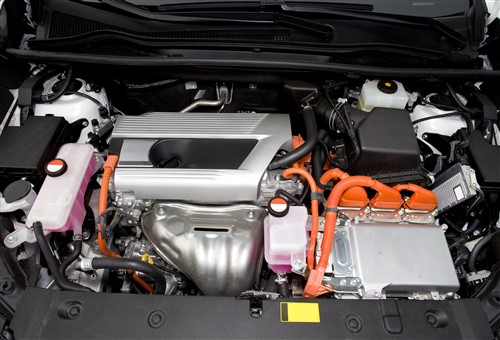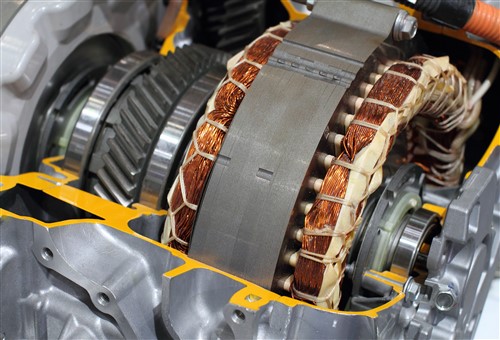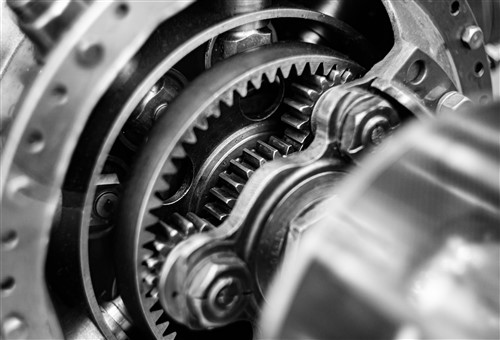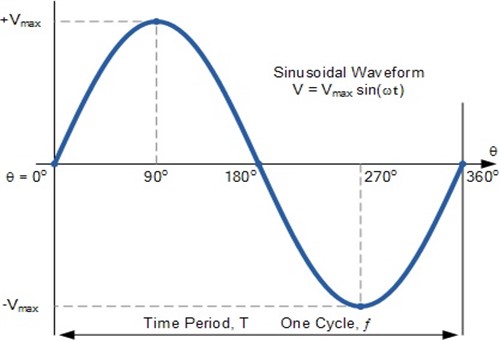
Many of us have lived through some major shifts and developments in automotive technologies, with the shift to OBD II perhaps being the most difficult to master. This shift presented many of us with the choice to learn to swim or sink, but for most of us, the choice was clear- we simply had to learn to swim but it turns out that we are still swimming upstream against the tide of new technologies that could still sink some of us.
Two such technologies are hybrid and electric vehicles, but the electric vehicle uptake is so slow that it will likely take another decade or two before we see purely electric vehicles in meaningful numbers. Hybrid vehicles, on the other hand, are selling like the proverbial hotcakes, and according to data from the Federal Chamber of Automotive Industries (FCAI), non plug- in hybrids saw sales of 81,786 units in 2022 alone, with Toyota leading the pack with 72,815 sales.
So what does the above statistic have to do with anybody’s state of mind? Just this: although there seems to be a lack of accurate and verifiable information available on the total number of both types of hybrid vehicles on our roads, there are likely about a million or so on the road today, so none of us can be ambivalent about or dismissive of hybrids any longer. Put differently, this means that we can no longer park the idea that we’ll get around to learning something about how hybrids work in the back of our minds until we manage to find the time for it.
Hybrids are around us now in meaningful numbers, and if we want to survive and thrive in a competitive job market, our need to learn how these vehicles work must be top of mind, not parked somewhere in the back of our collective mind. At the risk of overstating the case, we can run from hybrids, but we can't hide from them forever.
Having said the above, this article will discuss some of the operating principles of hybrid vehicles, but the overarching purpose of this article is to show that hybrid vehicles are not so different from the conventional vehicles we know that we need to be afraid or apprehensive of the idea of servicing, diagnosing, and repairing hybrids. This is admittedly saying a lot in one breath, but let us start with explaining-

We've all heard the 3-legged tool approach to car repair a million times before; this approach states that the stool represents a technician, and the three legs represent the three things all technicians need to be successful. These three things are proper tooling and equipment, fundamental knowledge about how cars work, and access to reliable and accurate service information.
However, when we consider hybrid vehicles, we need one more leg and while it is tempting to say that this leg is more important than any other leg, the fact is that all four legs of our table need to be equally sturdy if we are not to electrocute ourselves. Having said that, let’s look at what each of the four legs of our table represents, starting with-
Fundamental knowledge
If we look at cars objectively, we see that all cars work in much the same way, and all cars fail for largely the same reasons, so our fundamental knowledge is the sum total of all the knowledge we have gained over the years about how cars work.
For example, the electrical systems of all cars are built around the same laws of physics, so if we understand what aspects of electricity, say, Ohm’s Law, or maybe Faraday’s Law define, we should be able to diagnose and repair any electrical fault on any vehicle- at least in theory.
Let’s put this in perspective by saying that we all know how inductive devices like DC motors, solenoids, relays, capacitors, and ignition coils work. We also know how hydraulic brake systems, electric power steering systems, and window wiper systems work, so from that perspective, we should all have a sound foundational knowledge of how cars work and how to repair them.
Thus, since many of these systems and components are also present on hybrid vehicles, we should not experience any undue difficulty with diagnosing and repairing them provided we have access to the second leg of the table, which represents-
Accurate and reliable service information
Hybrid cars have two discrete electrical systems; a low-voltage system that powers (among other things) the lights, windows, infotainment system, A/C compressor and coolant pumps, and a high-voltage system that includes the battery pack, power electronics, and one or more motor/generators.
As a practical matter, the low voltage systems on hybrid cars are no different from those on conventional cars, but as with conventional cars, a wiring diagram is an essential tool we need to decipher the various pathways low-intensity currents and voltages follow throughout a particular hybrid vehicle or model.
NOTE: The high-voltage system, however, is something else entirely and we will discuss this a bit more later on.
Also as with conventional cars, we need technical information such as system descriptions, fault setting parameters, and suggested/recommended/specified procedures to diagnose and repair faults and defects. This is not because the low voltage systems on hybrid cars are somehow inherently different from those on conventional cars: it is simply because OEM manufacturers implement similar systems differently on their products, which brings us to the third leg of our table, with this leg representing-
Proper tooling
We have often made the point that any part or component that uses electricity to function can be tested/analysed/diagnosed with a digital storage oscilloscope, although some aspects of waveform analysis may require some additional training or practice. This is as true of diagnosing the low voltage systems of hybrid cars, as it is true of diagnosing the electrical systems of conventional cars. Moreover, as with conventional cars, one can profitably use an oscilloscope to diagnose a wide range of mechanical issues on the ICE engines of hybrids, including diagnosing misfires, compromised head gaskets, leaking valves, and many more. It goes without saying, though, that a high-end scan tool is also required item to perform bidirectional tests and relearning procedures.
However, along with a multimeter that is approved for use on hybrids, one also needs some very expensive and highly specialized test equipment that includes the following-
Milliohm and Megaohm meters
We need not delve into the fine details of how these meters work here, beyond saying that a megaohm meter injects large currents into high-voltage circuits to test for gross short circuits. By way of contrast, a milliohm meter tests circuits for short circuits that are too small for a megaohm meter to detect. These two items are indispensable tools in hybrid diagnostics, but their high cost is a major contributing factor that prevents many technicians from entering the lucrative field of hybrid car repair.
High voltage insulation tester
Since the high-voltage systems on hybrid cars are not grounded to the vehicles’ chassis or bodywork for safety reasons, it is critically important to test the insulation on high-voltage cables periodically to check for signs of cracked, broken, or degraded insulation that could cause short circuits to the bodywork.
As with bothmilliohm and megaohm meters, a high-voltage insulation tester is essential for effective hybrid car diagnostics, but sadly, these instruments are even more expensive than ohmmeters, which brings us to the last leg of our table, with this leg representing-
Specialised and focused training
This writer has heard many technicians say that the process of training, certification, and licensing required to work on hybrids is a major hassle in their lives that they do not need., especially given the fact that a minimum level of training is required before one can access OEM service information on hybrids in some or all local jurisdictions. This requirement is not intended to make life unnecessarily difficult for us; it is intended as a means of protecting untrained technicians against themselves.
Nonetheless, if one considers the fact that high-voltage battery packs provide voltages of between 200VDC and 800VDC with enough amperage to fatally electrocute a careless or untrained person, it only makes good sense to undergo all required training before touching a hybrid car in general and touching anything in its high-voltage system, in particular.
Training should also include instruction on the critical importance of wearing/using only approved PPE, and safety practices such as, checking safety gloves for holes, rips, and tears before using them, or checking the insulation on rated tools before using them, because failing to this every time you put on safety gloves or use insulated tools could get you electrocuted.
So in summary, the four-legged approach to working on hybrid vehicles is not much different from the three-legged stool approach to working on conventional vehicles. Both approaches ensure that you have everything you need to work safely and productively, but having said that, hybrid vehicles have some components and systems that conventional vehicles do not have, so let us look at some of these systems, starting with-

In hybrid speak, the vehicle's final drive is known as a "transaxle", which includes one or more motor/generators, some gearing, and a conventional differential. However, the overall layout of the transaxle and ICE can be either a parallel system or more commonly, a series parallel hybrid system. There are meaningful differences between these two systems, so let us look at the basics of how each system works, starting with –
Parallel hybrids
One example of this system is Honda’s IMA (Integrated Motor Assist) system in which a three-phase AC-motor stator is located in a conventional bell housing. In this design, the engine's crankshaft is connected directly to the motor's armature (rotor) so the small displacement engine can propel the vehicle through the motor. When additional power is required, several ECUs will initiate the high-voltage system to enable the motor/generator to produce the additional power. In these designs, the motor/generator is also used as a starter motor to start the vehicle's engine.
The term parallel hybrid derives from the fact that under some operating conditions, both of the vehicle’s power sources can operate simultaneously alongside each other.
Series parallel hybrid systems
The most common example of this system is used in Toyota’s Prius models, in which two three-phase AC motor/generators (aka MGs, for short) are connected to the internal combustion engine through a set of planetary gears that performs several functions, these functions being-
The above describes the basic operating principles of series-parallel hybrids, but at the heart of these systems is a component known as a-
Compound gear unit

Also known as “power splitting units”, or less commonly as “planetary gear drives”, this component allows for many different modes of power output. Here is the short version of how this works-
Depending on the desired mode of power output, the system will clamp one of the gear sets’ three major components, while driving a second component to force the third component in the gear set to rotate. Thus, by clamping different components at different times, output power can be directed to say, MG2 to provide regenerative braking to slow the vehicle down and charge the high-voltage battery pack, or to MG1 to assist in propelling the vehicle, which brings us to-

Image source: https://dipslab.com/wp-content/uploads/2019/06/Single-Phase-System.gif
Hybrid vehicles perform two kinds of energy conversion; the DC power that is stored in the high-voltage battery pack is converted into three-phase AC power through a process of synthesizing the DC power by an inverter that uses insulated gate bipolar transistors and converting high-voltage DC power into low-intensity 12-volt DC power by a relatively complicated step-down DC-to-DC converter/transformer.
In the first case, the insulated gate bipolar transistors act like switches that allow current to flow when they are “ON”, and interrupt the current flow when they are “OFF”. In practice, though, these transistors are cycled so rapidly between “ON” and “OFF” that they synthesise a three-phase AC current out of the DC current coming from the high-voltage battery pack to power the MGs.
Moreover, since the MGs generate AC power during regenerative braking, the inverter also contains high-voltage diodes to convert the AC power into DC power to charge the high-voltage battery pack. This process is an almost exact analogue for the way bridge rectifiers convert the AC power generated by alternators on conventional vehicles into DC power to charge the vehicle’s battery. The only difference is that the voltages and currents on hybrid vehicles are higher than on conventional vehicles.
In the second case, the DC-to-DC converter/step-down transformer uses fairly advanced electronic components to reduce the high-voltage battery pack's voltage to 12 volts to power the hybrid vehicle’s lights, coolant pumps, A/C compressor, and all the other consumers that require 12 volts to operate.
In practice, DC-to-DC converters/step-down transformers obviate the need for an alternator on most late-model hybrid vehicles, which reduces fuel consumption, parasitic power losses, and harmful exhaust emissions all at the same time, which leaves us with just-
It should be noted that working or inspecting the high-voltage system in all hybrid vehicles carries a significant risk of sustaining serious and even potentially fatal injuries. Therefore, all manufacturers of hybrid vehicles have published precise instructions on how to power down a hybrid vehicle, which include processes that must be followed before the battery pack is disconnected from the system.
As a practical matter, both powering down and powering up a hybrid vehicle is a little more complicated than just removing or reinserting the service plug. It is also important to note that these processes are NOT generic; each manufacturer has spent considerable amounts of time and money to develop specific processes that are designed to prevent technicians from sustaining serious injuries and damage from occurring to their vehicle’s electrical systems.
Therefore, undergoing the required training is a prerequisite for working on hybrid vehicles, and although some among us might see this requirement as a hassle, this point of view could exclude those that hold it from accessing potentially well-paying job opportunities in future.
While it could be argued that the job market in Australia is not changing as rapidly as it is in the USA and Europe because the uptake of hybrid and electric vehicles is slower here, the fact is that the local job market is changing and unless we upgrade our skill sets in time, many of us could find ourselves with skill sets that are no longer relevant or required in the near future.
After all, (almost) all of us were forced to become certified and/or licensed before we could work on conventional vehicles in the formal car repair industry, so why not obtain some more training to work on hybrid vehicles both legally and safely, as well because as they say, knowledge is power…not just a state of mind.